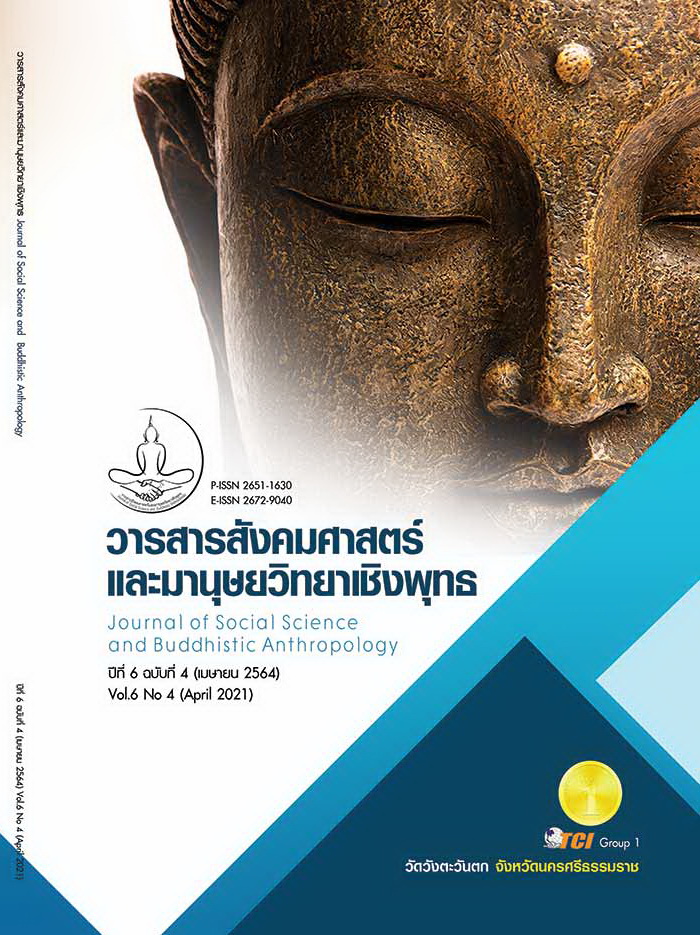INNOVATION DEVELOPMENT OF MAI-LISTED COMPANIES
Keywords:
Innovation Development, MAI-Listed Companies, Strategic ManagementAbstract
The Objectives of this research article were to 1) the levels of innovation development, management of organizational culture, technological transformation, strategic management and environment management of MAI - listed companies, and 2) the influences of management of organizational culture, technological transformation, strategic management, and environment management on the innovation development of MAI-listed companies. This research employed a quantitative method. The research sample consisted of 340 committee members of 170 companies listed on the MAI stock exchange 2 persons from each company) in 8 industry groups. The sample size was determined based on the criterion of 20 times the observed variables. They were selected via multi-stage sampling. Data were collected with the use of a questionnaire. Data analysis was performed using descriptive statistics and analyzed with a structural equation model. The findings showed that 1) innovation development, management of organizational culture, technological transformation, strategic management, and environment management of MAI - listed companies were rated at a high level; and 2) management of organizational culture had the highest overall influence on the innovation development of MAI-listed companies, followed by strategic management, technological transformation, and environment management, respectively. These research findings are beneficial for the MAI-listed companies, stock exchange, government agencies, and private sector as they can be used as the guidelines to formulate strategic planning and determine policies for innovation development in order to enhance capacity and achieve sustainable innovation development.
References
กระทรวงวิทยาศาสตร์และเทคโนโลยี. (2559). การขับเคลื่อนอุตสาหกรรมไทยในเชิงสร้างสรรค์. กรุงเทพมหานคร: กระทรวงวิทยาศาสตร์และเทคโนโลยี.
ชูวงศ์ ฉายะบุตร. (2536). การให้บริการแบบครบวงจร แนวทางการให้บริการเชิงรุกของกรมการปกครองเทศาภิบาล. วารสารเทศาภิบาล, 88,(5), 11-14.
ณัฏฐพันธ์ เขจรนันท์. (2552). การจัดการเชิงกลยุทธ์ ฉบับปรับปรุงใหม่. กรุงเทพมหานคร: ซีเอ็ด ยูเคชั่น.
ตลาดหลักทรัพย์แห่งประเทศไทย. (2563). โครงสร้างการจัดกลุ่มอุตสาหกรรมในตลาดหลักทรัพย์ เอ็ม เอ ไอ (MAI). เรียกใช้เมื่อ 2 กุมภาพันธ์ 2563 จาก https://www.set. or.th/mai/th/company/ industry_group_p1.html
ปิยะ ตันติเวชยานนท์. (2560). ปัจจัยที่มีผลต่อการเป็นองค์การแห่งนวัตกรรม กรณีศึกษา: บริษัท ซุปเปอร์ริช อินเตอร์เนชั่นเนล เอ็กซ์เชนจ์ 1965 จำกัด. วารสารวิชาการมหาวิทยาลัยปทุมธานี, 9(2), 102-111.
พิบูล ทีปะปาล. (2551). การจัดการเชิงกลยุทธ์. กรุงเทพมหานคร: อมรการพิมพ์.
สำนักนวัตกรรมแห่งชาติ องค์การมหาชน. (2561). การพัฒนานวัตกรรมในประเทศไทย. กรุงเทพมหานคร: กระทรวงวิทยาศาสตร์และเทคโนโลยี.
Bartol, K. & Martin, D. (1998). Management. Boston: McGraw-Hill.
__________ (1998). Management. Boston: McGraw-Hill.
Christiansen, J. A. (2000). Building the innovative organization: Management systems that encourage innovation. Hampshire: Macmillan Press.
Daft, R. L. (1992). Organization theory and design. Paul, Minn: West Pub.
Diamantopoulos, A. & Siguaw, J. A. (2000). Introduction to LISREL: A guide for the uninitiated. London: Sage.
Dobni, C. B. (2008). Measuring innovation culture in organizations: The development and validation of a generalized innovation culture construct using exploratory factor analysis. European Journal of Innovation Management, 11(4), 539-559.
Dundon, E. (2002). The seeds of innovation: Cultivating the synergy that fosters new ideas. New York: AMACOM.
Kline, R. B. (2005). Principle and practice of structural equation modeling. New York: Guilford.
Luecke, R. & Katz, R. (2003). Managing creativity and innovation. Boston: Harvard Business School Press.
Pitts, R. A. & Lei, D. (2000). Strategic management: Building and sustaining competitive advantage. New York: South-Western Publishing.
Wheelen, T. L. & Hunger, J. D. (2002). Strategic management and business policy. New Jersey: Prentice-Hall.








